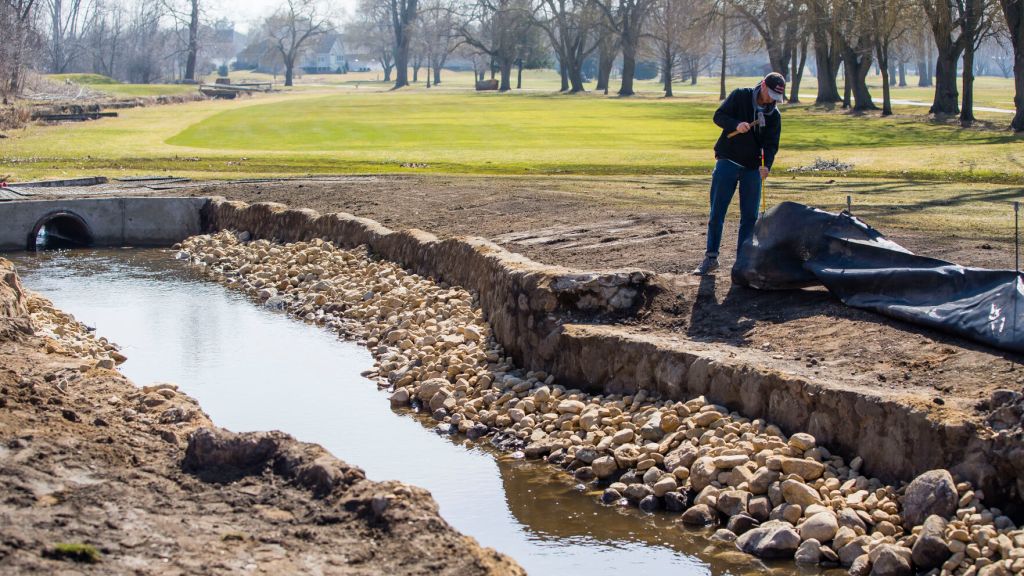MISHAWAKA, Indiana — The newest water hazard on the 16th hole at Eberhart-Petro Golf Course — which lies between South Bend and Elkhart — was nearly a century in the making.
What started as a project to repair a pipe that carried water from Willow Creek under a portion of the golf course resulted in the unearthing of what the city is calling “a hidden treasure,” a pristine, stone wall built more than 80 years ago by citizens during the Great Depression as part of the Works Progress Administration (WPA).
Eberhart-Petro Golf Course opened in 1929 with just nine holes on the south side of the St. Joseph River, but was later converted to a full 18-hole track in 1949.
Willow Creek was routed underneath the golf course decades ago via a pipe that existed in the creek bed and was covered with soil. When the deteriorating pipe began to cave in, causing sinkholes at the surface, crews with the St. Joseph County Drainage Board began the repair several weeks ago.

This is part of the recently uncovered WPA wall on the 16th hole at Eberhart-Petro golf course in Mishawaka. South Bend Tribune Photo/MICHAEL CATERINA
John Law, construction supervisor with the county, said a work crew found the wall that had been buried decades ago.
“There were WPA walls on either side of the bed,” Law said. “The mortar had stayed moist.”
Mishawaka Mayor Dave Wood urged crews to simply remove the pipe and return the creek to its original state from when the stone wall was built.
Last week, crews excavated the creek bed and some work was done to the ends, but water began returning to the area and hole No. 16.
“It’s historic,” Wood said of the WPA wall. “These are protected and have historic status in the city of Mishawaka. I feel we are responsible to educate the citizens about who built these. I view these as treasures.”
The new Willow Creek wall is only one of many WPA structures throughout the city. The organization built streets, sewers and recreational facilities throughout Mishawaka between 1935 and 1941, and the program put people who lost jobs during the Great Depression to work.
Some of the other WPA projects in Mishawaka are Battell Park’s rock garden, the Monkey Island bridge, the entrance to Petro Park and the many walls along Wilson Boulevard near the St. Joseph River.
When the WPA was in operation, the federal government paid 90% of the labor costs for the projects, but the materials were left for cities and towns to purchase.
Wood said the opening up of Willow Creek actually will provide a boost in flood control, for the open creek now will be able to handle more water than the pipe it once traveled through.
He said the city is exploring plans to further open the creek later this fall, possibly from a pond on the golf course to the river. It is hoped the work will expose more of the historic stone wall.
